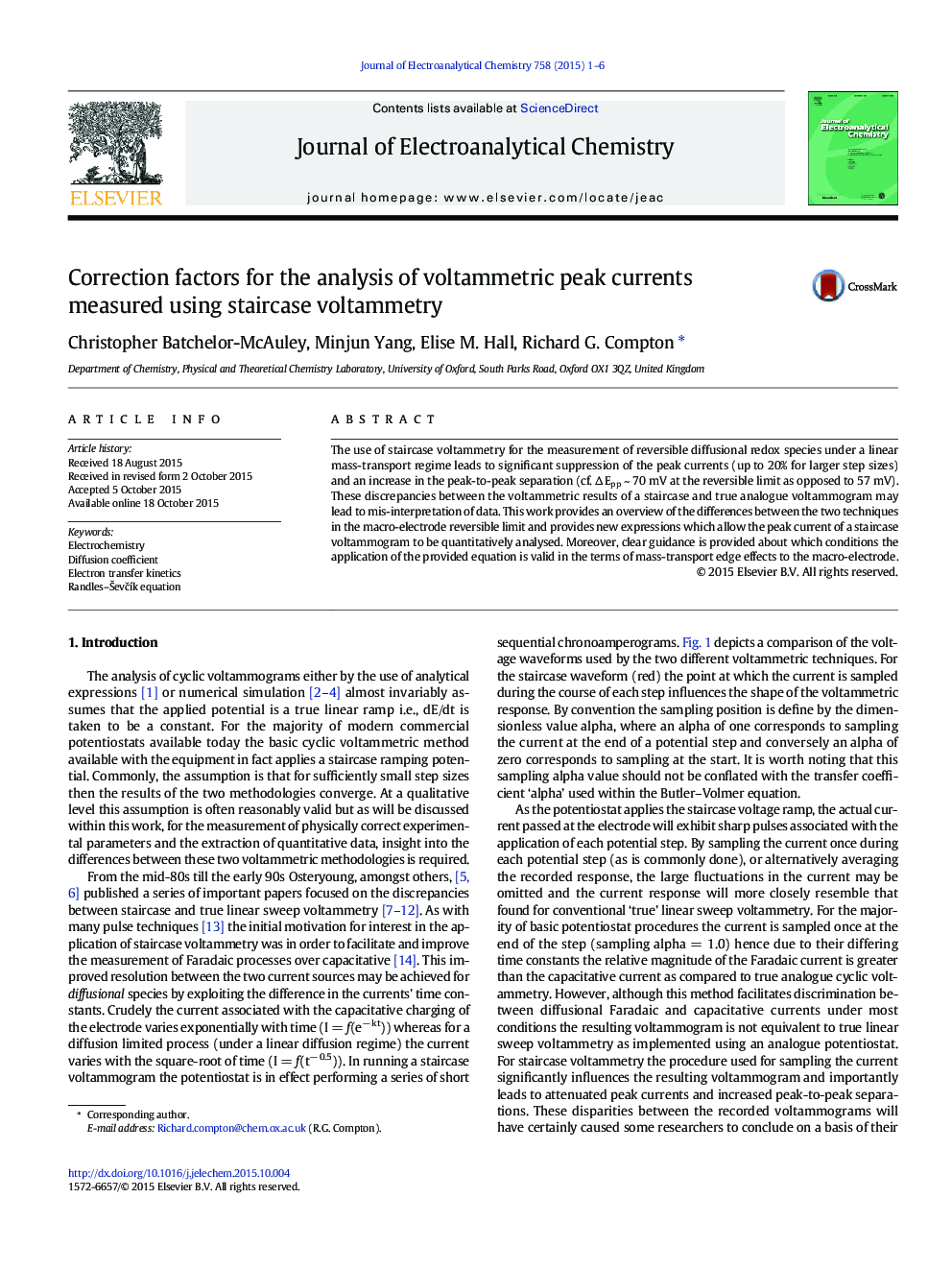| Article ID | Journal | Published Year | Pages | File Type |
|---|---|---|---|---|
| 218235 | Journal of Electroanalytical Chemistry | 2015 | 6 Pages |
•Staircase voltammetry of reversible species is sensitive to the step potential.•Large step sizes lead to smaller peak currents and larger peak-to-peak separations.•Expressions are provided allowing the quantitative analysis of staircase voltammetry.•‘Edge’ effects only need to be considered for cases where dimensionless σ < 3350.
The use of staircase voltammetry for the measurement of reversible diffusional redox species under a linear mass-transport regime leads to significant suppression of the peak currents (up to 20% for larger step sizes) and an increase in the peak-to-peak separation (cf. ∆ Epp ~ 70 mV at the reversible limit as opposed to 57 mV). These discrepancies between the voltammetric results of a staircase and true analogue voltammogram may lead to mis-interpretation of data. This work provides an overview of the differences between the two techniques in the macro-electrode reversible limit and provides new expressions which allow the peak current of a staircase voltammogram to be quantitatively analysed. Moreover, clear guidance is provided about which conditions the application of the provided equation is valid in the terms of mass-transport edge effects to the macro-electrode.
